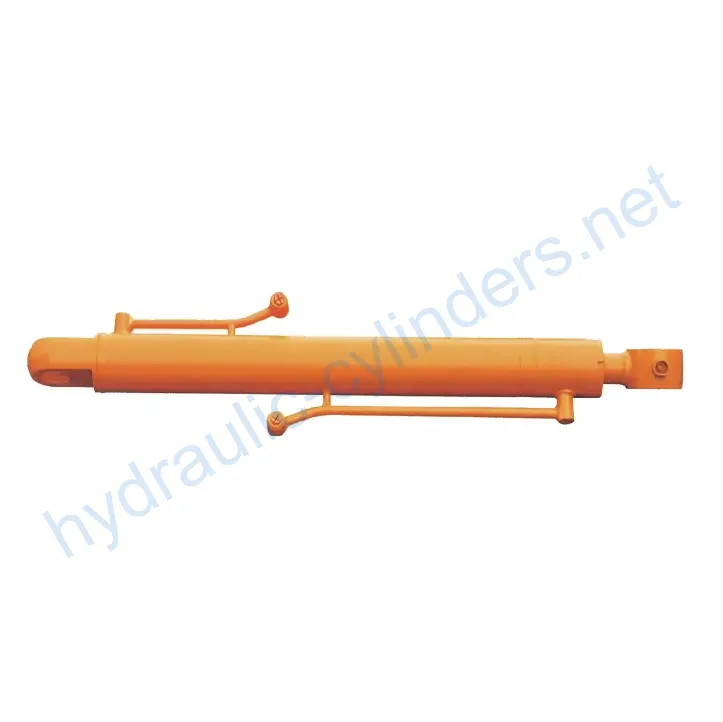Bucket Cylinder For Caterpillar Middle Excavator E200B
Kaip vienas iš hidraulinių cilindrų gamintojų, tiekėjų ir mechaninių produktų eksportuotojų, mes siūlome hidraulinius cilindrus ir daugelį kitų produktų.
Susisiekite su mumis dėl išsamesnės informacijos.
Paštas:sales@hydraulic-cylinders.net
Hidraulinių cilindrų gamintojas, tiekėjas ir eksportuotojas.
Bucket Cylinder For Caterpillar Middle Excavator E200B
Introduction
A bucket cylinder is a type of hydraulic cylinder specially designed for controlling the movement of the bucket in heavy machinery such as excavators, backhoes, and front loaders. Its main function is to enable the bucket to perform lifting, lowering, and tilting operations, thus facilitating material handling tasks of various kinds. In the hydraulic system, the bucket cylinder achieves precise control of the bucket’s movement through changes in hydraulic oil pressure, allowing operators to handle heavy loads efficiently and adapt to complex working environments and diverse job requirements.

Features
- High strength and durability: Typically made of high-strength steel or aluminum, it can withstand high pressure and heavy loads, adapting to harsh working environments. Designed with wear resistance and corrosion resistance in mind, it extends service life.
- Efficient hydraulic operation: Utilizing hydraulic oil pressure to achieve smooth extension and retraction, it can respond quickly to control commands, providing powerful pushing and pulling force suitable for handling heavy loads and complex job tasks.
- Various types: Single-acting (hydraulic used only in one direction) or double-acting (hydraulic used in both directions) cylinders can be chosen according to needs to meet different operation requirements. Some models are telescopic, allowing greater extension without increasing external dimensions, suitable for applications with limited space.
- Perfect replacement: Our product can perfectly replace other hydraulic cylinders.

Applications
Bucket cylinders are widely used in various applications such as:
- Construction equipment: In excavators, they are critical for digging, loading, and moving soil or debris. In backhoes, bucket cylinders help with both digging and lifting.
- Agricultural machinery: Used in front-end loaders for scooping, lifting, and transporting soil, hay, and other materials.
- Excavators: Bucket cylinders achieve digging action by allowing the bucket to penetrate the soil.
- Loaders: In front loaders, they help with lifting and tilting of goods efficiently.
Design Considerations and Selection Criteria
When selecting bucket cylinders, there are several key design considerations to keep in mind:
- Bearing capacity: The cylinder must be able to withstand high pressure and heavy loads.
- Sealing: The piston seal ring, rod seal ring, and other sealing components must be made of wear-resistant materials such as polyurethane or nitrile rubber, and the cylinder body and thread end surface must be finely processed to improve wear resistance.
- Durability: The cylinder should be able to withstand harsh operating conditions and have a long service life.
- Safety: The cylinder must be designed with safety in mind, ensuring that it will not fail or cause injury during operation.
- Maintainability: The cylinder must be easy to maintain and repair, allowing for quick replacement of worn parts and minimizing downtime.

Sealing and Lubrication
Bucket cylinders use various sealing components such as piston seal rings and rod seal rings, made of wear-resistant materials such as polyurethane or nitrile rubber. The cylinder body and thread end surface are finely processed to improve wear resistance. The cylinder requires regular lubrication using hydraulic oil to ensure smooth operation.
Maintenance and Repair
To ensure optimal performance and extend the service life of bucket cylinders, regular maintenance is required. Common maintenance tasks include:
- Regular inspections
- Proper lubrication
- Seal replacement
- Calibration checks
Proper installation is also crucial, and alignment guidelines should be provided. The cylinder should be secured using appropriate mounting brackets. Recommended inspection, repair, and replacement procedures should be followed to maximize the cylinder’s service life.

Safety Considerations and Environmental Factors
Bucket cylinders should be operated in accordance with all relevant safety regulations and guidelines. Proper safety measures should be taken when working with heavy machinery. Environmental factors such as temperature and humidity should also be taken into account when selecting and operating bucket cylinders.
Common Faults and Troubleshooting
Common faults that can occur with bucket cylinders include:
- Leaking oil
- Slow operation
- Erratic movement
To diagnose and solve these problems effectively, proper troubleshooting techniques should be followed. Regular maintenance and inspection can help prevent potential issues.

About Us
We are a leading manufacturer and wholesaler of hydraulic cylinders in the domestic and international markets. Our complete range of products and excellent quality have made us one of the most trusted and respected names in the industry. We place great emphasis on the quality of our products, utilizing a fine production management system in our advanced manufacturing facilities, and constantly improving the quality of our products with the use of technology, expert personnel and professional testing systems. We have a strong R&D team and are committed to providing high-efficiency, high-precision, and high-quality products that meet the diverse needs of our customers.

Our strengths include:
- Professionalism
- International certification
- Customization services
- Advanced production equipment
- After-sales service
Author: lyl
Take a Tour of Our VR Factory:
Take a tour of our VR factory with the following
Hydraulic Cylinder Application:


